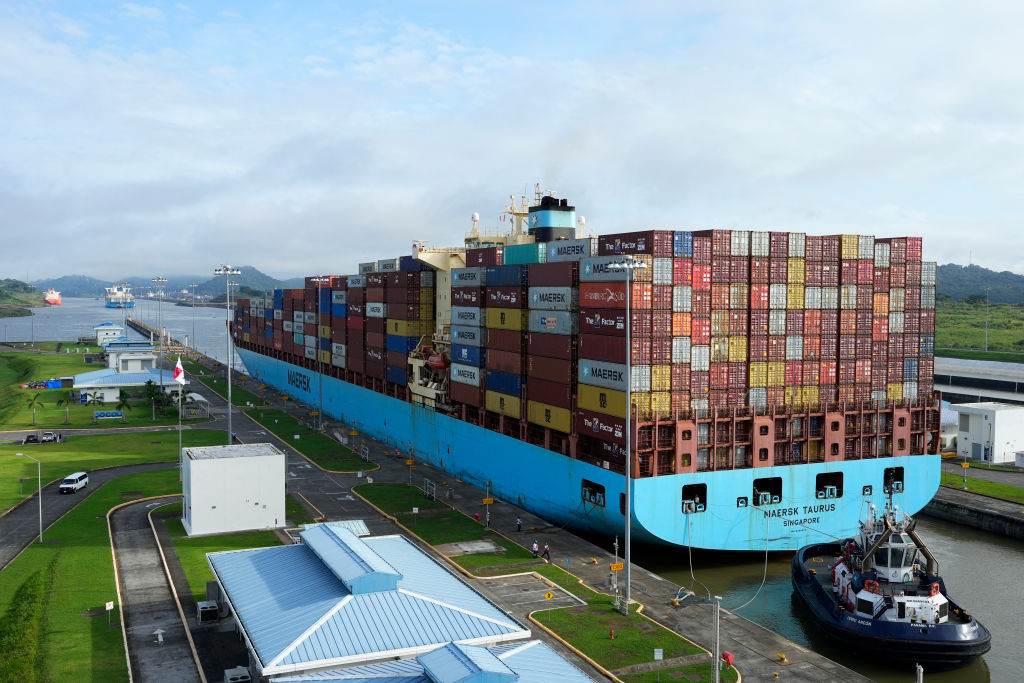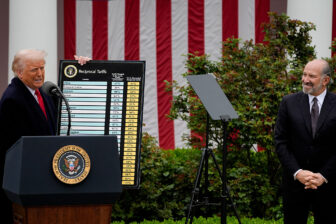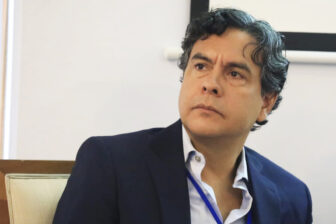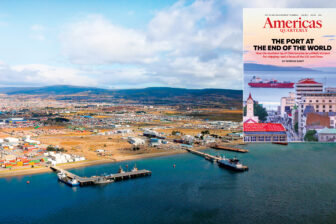
On April 2, the U.S. tore up the trade rulebook it helped create, as the White House implemented sweeping tariffs that redefined how the world’s largest economy does business. Nearly all countries now face a 10% tariff, and higher individualized rates of up to 50% were also imposed before the Trump administration issued a 90-day pause, set to expire on July 9.
For the U.S.’s closest allies, Canada and Mexico, exceptions were carved out under the USMCA. However, for much of the world, including Latin America, the message was clear: trade with the U.S. would be on U.S. terms.
Latin America must now decide whether to double down on the current system, where the U.S. plays a dominant yet unpredictable role, or to embrace regional integration and economic diversification with Asia and Europe to hedge against future shocks. Depending on national policy responses and the evolution of bilateral trade negotiations, the aftermath of “Liberation Day” could open alternate pathways for economic growth, foreign direct investment (FDI) and trade.
Global trade unravels
The unraveling of the global trade system did not begin this year. Since 2019, the U.S. paralyzed the World Trade Organization’s (WTO) dispute settlement system by refusing to appoint members to its Appellate Body, the global referee of trade disputes. By 2025, the U.S. formally abandoned the rules-based approach in favor of a protectionist model aiming to correct perceived historical injustices, as allegedly reflected in the country’s persistent trade deficit, and restore the glory days of industrial employment.
Under the new system, unilateral tariffs now apply broadly, blurring distinctions between allies and adversaries, as well as free trade agreement (FTA) commitments. The U.S. introduced country-based, rather than product-based tariffs, effectively creating a hierarchy of trading partners and dismantling the WTO’s most-favored-nation (MFN) principle of non-discrimination. A cornerstone of international trade, the MFN principle ensured equal treatment for all: the same tariff rate applies to a given product from all nations, unless a formal FTA provides preferential terms.
Tariffs differentiated by country rather than product create strong incentives for exporters to reroute goods through low-tariff jurisdictions. Without non-discriminatory tariffs or a dramatic upgrade in supply chain transparency, triangulation is likely to increase. Preventing this would require the U.S. to track the origin and content of every good across various global supply chains. This would be an administrative and logistical nightmare, given that matching tariffs for each product and country could result in over 2.6 million unique tariff rates.
The result is a system no longer anchored in international legal commitments, but in shifting domestic economic and political calculations. Uncertainty is no longer a temporary disruption: it is the new normal.
Where Latin America stands
Latin America is especially vulnerable to these changes. Of the 20 countries with an FTA with the U.S., 12 are in the Americas, yet only Canada and Mexico received partial exemptions under the USMCA. Canada and Mexico also retain privileged access to the U.S. market, although this position is not immune to political risk and sector-specific tariffs such as steel, aluminum, and automobiles, and potential new tariffs on pharmaceuticals and semiconductors.
In the rest of Latin America, WTO rules or FTAs are no longer a guarantee of stable rules that favor closer economic relations with the U.S. This has prompted countries like Brazil and Colombia to seek closer ties with China.
A recent opinion poll commissioned by The Economist found that most South American countries surveyed now view China as a more reliable trade partner than the United States. Trade data support this shift: only Colombia, Ecuador, Mexico, and Central American countries trade more with the U.S. than with China.
As U.S. tariffs expand and their economic effects take hold, Latin America’s raw materials and minerals could increasingly find their way to China, just as Chinese goods and investment deepen their reach in Latin America.
Potential trade strategies
In response to this volatility, Latin American countries may navigate the complex trade landscape by choosing different strategies, each shaped by their geography, politics, and risk tolerance.
Mexico seems to be reinforcing its alignment with U.S. policies and stringent compliance to maintain tariff preferences, aiming to reduce risk. By contrast, Brazil and Argentina may opt for strategic hedging, maximizing flexibility and long-term payoff by maintaining their ties with China, without going all-in on one side.
Panama and Ecuador may adopt a more transactional approach, utilizing their trade access as leverage and offering deals in exchange for tariff exemptions or FDI.
Canada is actively pursuing market diversification with the European Union and other regions while also seeking to strengthen security and economic cooperation with the U.S. Similarly, Uruguay and Chile may diversify by investing in intra-regional trade and domestic capacity, thus reducing their dependency on China and the U.S.
Strategic commodities
Despite the turmoil, Latin America has a key advantage: natural resources. Countries rich in rare earths, advanced semiconductor inputs, and food commodities may soon have newfound leverage.
Brazil holds the world’s third-largest reserves of rare earth elements, yet Latin America accounts for less than 1% of global production. While it cannot rival China’s dominance (nearly 70% of the world’s production and 90% of refining capacity), the region could become a vital supplementary source to help diversify sourcing over the next decade. The lithium triangle of Argentina, Bolivia and Chile has already drawn increased interest from Asia and Europe, while Chile and Peru are major exporters of copper.
Geography and logistics add another layer of strategic value. Proximity to the U.S. and other large consumer markets like Brazil and Mexico, combined with the strategic value of leading efforts to modernize ports, trade corridors and telecommunications, gives the region leverage in future negotiations. This transactional window, while narrow and volatile, offers Latin America a rare opportunity to translate its location and resources into real strategic power.
Rethinking Latin American trade
As global trade becomes more fragmented and transactional, Latin America will need to rethink its role in a world no longer governed by the principles of multilateralism. The coming years will be critical, as the region either adapts to this new reality or risks being sidelined in a global economy increasingly defined by U.S.-China tensions.
Still, the region has options. Latin America can choose to align closely with the U.S., hedge by engaging with both Washington and Beijing, or try to chart its own course through diversification and reform. How this will play out will ultimately depend on each country’s ability to define and commit to a sound medium- and long-term strategy, providing greater certainty in domestic policies affecting trade and investment to help counterbalance growing international uncertainty.
For most of the region, diversification has remained more of a talking point than a reality, limited by infrastructure gaps, red tape, and lack of long-term investment. The region also needs to tackle fundamental reforms: improving the rule of law, reducing corruption, modernizing customs, and investing in energy and logistics to support competitive exports.
Without these changes, Latin America risks being left behind as the global trade map is being redrawn. The U.S. may have thrown out the rulebook, but the game is far from over, and Latin America still has a say in how it’s played.










